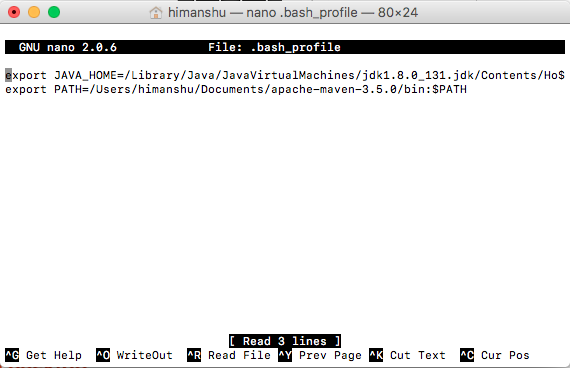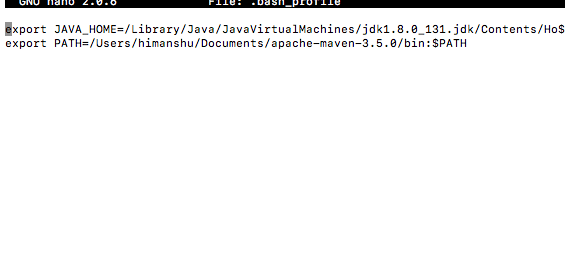An environment variable in a named object containing data which can be used by multiple applications or processes. Basically, it is just a variable with a name and an associated value. It can be used to determine anything like location of executable files, libraries, current working directory, default shell, or local system settings.
For those new to mac can get overwhelmed with how to set up and manage these environment variables. This guide provides easy ways to do so.
Displaying current Environment Variables
This is very easy. Just open the Terminal and run the command printenv as shown below.
HIMANSHUs-MacBook-Pro:~ himanshu$ printenvJAVA_HOME=/Library/Java/JavaVirtualMachines/jdk1.8.0_131.jdk/Contents/HomeTERM_PROGRAM=Apple_TerminalSHELL=/bin/bash…
This will list all the environment variables currently set.
However, for displaying the value of any specific environment variable run the echo $[variable name] on the terminal, as shown below.
HIMANSHUs-MacBook-Pro:~ himanshu$ echo $JAVA_HOME/Library/Java/JavaVirtualMachines/jdk1.8.0_131.jdk/Contents/Home
Setting temporary environment variable using terminal
If the environment variable you wish to set is to be used once or twice, you would like to set a temporary variable for it, avoiding unwanted variables staying in the system. You can do this simply by opening the terminal and running export command followed by the variable name and its value.
HIMANSHUs-MacBook-Pro:~ himanshu$ export JAVA_HOME=/Library/Java/JavaVirtualMachines/jdk1.8.0_131.jdk/Contents/Home
The above example sets the variable $JAVA_HOME to the specified value. However, if your requirement is to append a value to an existing environment variable, then assign the value as
export [existing_variable_name]=[new_value]:$[existing_variable_name]
the ?:? here append the value to the existing value. See example below.
HIMANSHUs-MacBook-Pro:~ himanshu$ export PATH=/Users/himanshu/Documents/apache-maven-3.5.0/bin:$PATH
Setting permanent environment variable using terminal
Since Mac uses bash shell, so the environment variables can be added to the .bash_profile directory, for the current user. The path to this file can be found using the command
HIMANSHUs-MacBook-Pro:~ himanshu$ ~/.bash_profile
Get started by opening this file using a text editor. I?m using nano ? a terminal based text editor, you may use any text editor you like ? to open the file and edit it.
HIMANSHUs-MacBook-Pro:~ himanshu$ nano .bash_profile
This will open the .bash_profile file in the terminal.
Note: If there is no file named .bash_profile, then this above nano command will create a new file named .bash_profile .
Now move to the end of the file, go to the next line. Now add the desired environment variables using export command as we did before.

Press ctrl+X to exit the editor. Press ?Y? for saving the buffer, and you will return back to the terminal screen.
We are done now!
You may again run echo $[variable_name] to see the value of your just saved environment variable.
UPDATE: Don?t forget to close and reopen the terminal before using your newly set environment variable. Reopening the terminal loads the updated .bash_profile file.


